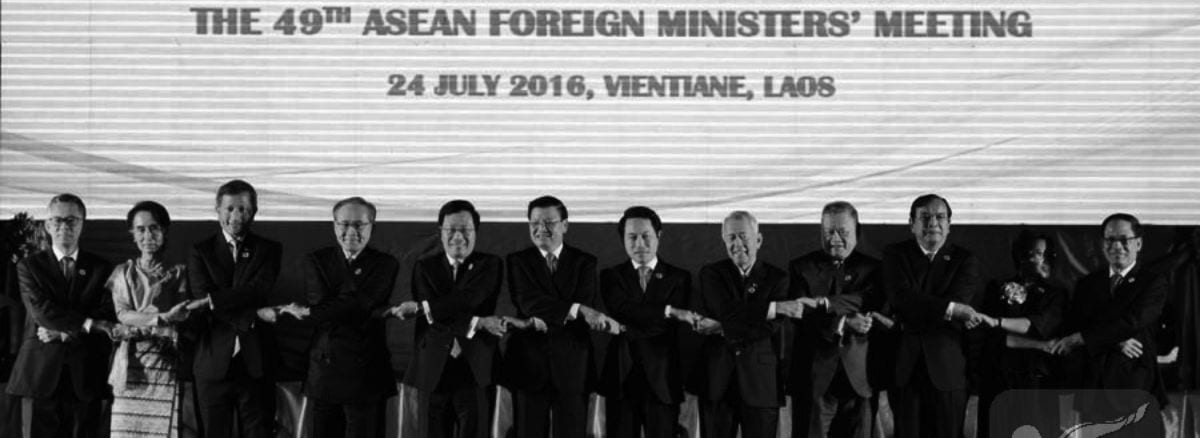Seeking a Common Ground

Source: Xinhua
By Habibah H. Hermanadi, Research Intern at ASEAN Studies Center UGM
At the end of the 2016 ASEAN regional summit all member states are looking forward to the joint declaration which will define ASEAN’s current stance as one unity, this one voice decision making process was seen as a way to assure unanimity within the forum. Once again the issue of South China Sea was brought into the table and causing internal schism. After Beijing rejected tribunal’s ruling in South China Sea earlier this month on 12th of July, the decision clearly stated that the permanent Court of Arbitration found that China had no basis for its expansive claims to territorial waters around the Philippines. Internal fragmentation within the meeting was not subtle as Cambodia publicly endorses China with their claim and China directly showed its gratitude towards Cambodia for taking charge of impartiality. The opposition shown by Cambodia was rather predictable considering what Prime Minister Hun Sen’s statement last year where he emphasized the importance of exclusive meeting only among the countries who are directly affected by the issues. In Vientiane, not until the 25th of July the draft statement to be issued by the foreign ministers under the clause of South China Sea was left blank, eventually a consensus was reached with all parties agreeing to refer back to UNCLOS code of conduct.
The utterance given by the arbitration tribunal supposedly helps to resolve disputes; the result is upholding the law and clarifies the stance of the parties. Regardless how Beijing had vowed to ignore the legally binding ruling, the decision by the tribunal became the principal assurance not only for the Philippines but also Indonesia, Malaysia, and Vietnam where if the claim was invalid for the Philippines it is equally invalid to other states and the rest of the international community.
The current chair of ASEAN, Laos, was expected to steer the negotiation in order to draw a equitable result for all of the state members. As the current chair Laos’ involvement and intervention were paramount in preventing another failure from getting into consensual joint statement, presumably a compromised stance is what the forum aimed for yet the current result shown that the declaration merely touch the surface of the conflict. To negotiate and stand against China was considered to be a delicate issue and could be detrimental for Laos’ domestic needs considering that People’s Republic of China is still Laos‘crucial economic partners. By the end of the summit, the joint declaration some considered as fruitful is causing doubts because it is perceived as bland and inconclusive. There are still high hopes upon the current Prime Minister of Laos, Thongloun Sisoulith as his internationalist perspective shapes the current Laos foreign policy architecture. In line with Laos’ theme of “Turning Vision Into Reality for a Dynamic ASEAN Community.” this summit was the key for all the partaking actors to actually come up with tangible outcomes, a ‘reality’ deemed and visualized by Laos as the chair of ASEAN. Nevertheless, the pressure was rather high for Laos as it sources from both ASEAN’s side and China. Laos should be able to make the best out of its current leadership position yet at the same time anticipate further fragmentation coming out of this year’s summit.
Naturally, this summit was the reflection of where has ASEAN brought itself into, whether or not its progress up until 2016 had fulfilled what the region envisioned and what will they do next. The region itself must be able to discuss sensitive issues which are occurring within the region yet at the same time strengthen the cooperation and examine the ongoing integration process. Inevitably external influences are flooding ASEAN’s decision making process, despite of the status quo it is important to stay as one or else ASEAN will be leaving up rooms for disintegration. Not to repeat the 2012 debacle which caused seeds of discord ASEAN must be able to step up their diplomatic strategy, acknowledging what this region capable of and upping their ante with stronger bargaining position. As the summit continues that desirable tangible conclusion must be able to represent a sense of common ground among ASEAN state members.




